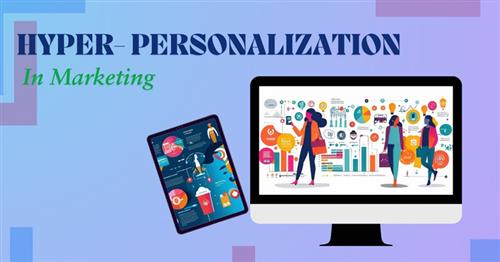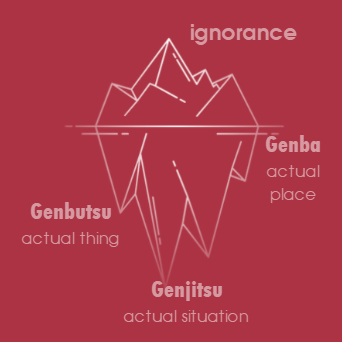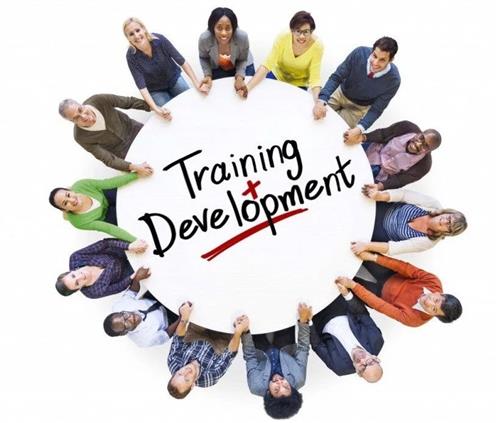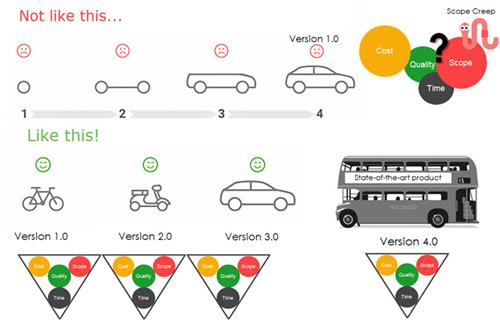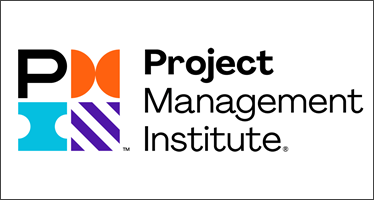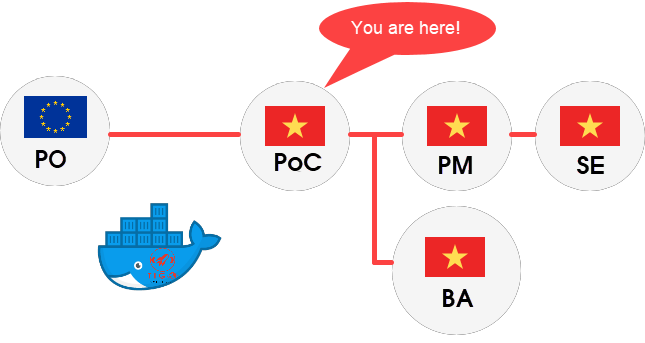
Why is it important to have a “single point of contact (SPoC)” on an IT project?
Last updated: November 22, 2022 Read in fullscreen view
- 02 Nov 2021
 What is Terms of Reference (ToR)? 1001
What is Terms of Reference (ToR)? 1001 - 18 Oct 2021
 Key Elements to Ramping Up a Large Team 820
Key Elements to Ramping Up a Large Team 820 - 05 Jul 2020
 What is Sustaining Software Engineering? 819
What is Sustaining Software Engineering? 819 - 03 Apr 2022
 Microsoft Solutions Framework (MSF) 780
Microsoft Solutions Framework (MSF) 780 - 20 Mar 2022
 What is a Multi-Model Database? Pros and Cons? 751
What is a Multi-Model Database? Pros and Cons? 751 - 03 Jul 2022
 What is the difference between Project Proposal and Software Requirements Specification (SRS) in software engineering? 720
What is the difference between Project Proposal and Software Requirements Specification (SRS) in software engineering? 720 - 01 Oct 2020
 Fail fast, learn faster with Agile methodology 695
Fail fast, learn faster with Agile methodology 695 - 01 Aug 2024
 The Standish Group report 83.9% of IT projects partially or completely fail 642
The Standish Group report 83.9% of IT projects partially or completely fail 642 - 14 Oct 2021
 Advantages and Disadvantages of Time and Material Contract (T&M) 577
Advantages and Disadvantages of Time and Material Contract (T&M) 577 - 20 Jul 2022
 Software Myths and Realities 537
Software Myths and Realities 537 - 19 Oct 2021
 Is gold plating good or bad in project management? 521
Is gold plating good or bad in project management? 521 - 13 Apr 2024
 Lessons on Teamwork and Leadership from Chinese story book "Journey to the West" 515
Lessons on Teamwork and Leadership from Chinese story book "Journey to the West" 515 - 18 Oct 2020
 How to use the "Knowns" and "Unknowns" technique to manage assumptions 493
How to use the "Knowns" and "Unknowns" technique to manage assumptions 493 - 02 May 2022
 What Is RAID in Project Management? (With Pros and Cons) 476
What Is RAID in Project Management? (With Pros and Cons) 476 - 13 Jan 2020
 Quiz: Test your understanding project cost management 455
Quiz: Test your understanding project cost management 455 - 08 Oct 2022
 KPI - The New Leadership 444
KPI - The New Leadership 444 - 06 Mar 2021
 4 things you need to do before getting an accurate quote for your software development 414
4 things you need to do before getting an accurate quote for your software development 414 - 14 Jun 2022
 Example and Excel template of a RACI chart in Software Development 406
Example and Excel template of a RACI chart in Software Development 406 - 18 Dec 2023
 The Cone of Uncertainty in Scrum & Requirement Definition 405
The Cone of Uncertainty in Scrum & Requirement Definition 405 - 01 Sep 2022
 Facts Chart: Why Do Software Projects Fail? 372
Facts Chart: Why Do Software Projects Fail? 372 - 30 Jan 2022
 What Does a Sustaining Engineer Do? 365
What Does a Sustaining Engineer Do? 365 - 27 Jan 2020
 Should a project manager push developers to work more hours due to mistakes of manager schedule setting? 362
Should a project manager push developers to work more hours due to mistakes of manager schedule setting? 362 - 16 Apr 2021
 Insightful Business Technology Consulting at TIGO 310
Insightful Business Technology Consulting at TIGO 310 - 23 Sep 2021
 INFOGRAPHIC: Top 9 Software Outsourcing Mistakes 300
INFOGRAPHIC: Top 9 Software Outsourcing Mistakes 300 - 13 Nov 2021
 What Is Bleeding Edge Technology? Are bleeding edge technologies cheaper? 287
What Is Bleeding Edge Technology? Are bleeding edge technologies cheaper? 287 - 07 Jul 2021
 The 5 Levels of IT Help Desk Support 278
The 5 Levels of IT Help Desk Support 278 - 12 Aug 2022
 What is End-to-end project management? 275
What is End-to-end project management? 275 - 03 Jan 2023
 Organizing your agile teams? Think about M.A.T (Mastery, Autonomy, Purpose) 270
Organizing your agile teams? Think about M.A.T (Mastery, Autonomy, Purpose) 270 - 17 Oct 2021
 Does Fast Tracking increase project cost? 259
Does Fast Tracking increase project cost? 259 - 07 Jul 2022
 Managing Project Execution Terms 257
Managing Project Execution Terms 257 - 10 Dec 2023
 Pain points of User Acceptance Testing (UAT) 254
Pain points of User Acceptance Testing (UAT) 254 - 28 Dec 2021
 8 types of pricing models in software development outsourcing 252
8 types of pricing models in software development outsourcing 252 - 19 Apr 2021
 7 Most Common Time-Wasters For Software Development 250
7 Most Common Time-Wasters For Software Development 250 - 09 May 2022
 Build one to throw away vs Second-system effect: What are differences? 245
Build one to throw away vs Second-system effect: What are differences? 245 - 11 Jan 2024
 What are the Benefits and Limitations of Augmented Intelligence? 241
What are the Benefits and Limitations of Augmented Intelligence? 241 - 13 Dec 2020
 Move fast, fail fast, fail-safe 237
Move fast, fail fast, fail-safe 237 - 31 Oct 2021
 Tips to Fail Fast With Outsourcing 228
Tips to Fail Fast With Outsourcing 228 - 26 Sep 2024
 Successful Project Management Techniques You Need to Look Out For 223
Successful Project Management Techniques You Need to Look Out For 223 - 06 Jun 2022
 Change Management at the Project Level 221
Change Management at the Project Level 221 - 01 Mar 2023
 What is Unit Testing? Pros and cons of Unit Testing? 217
What is Unit Testing? Pros and cons of Unit Testing? 217 - 06 Feb 2021
 Why fail fast and learn fast? 217
Why fail fast and learn fast? 217 - 22 May 2022
 What are common mistakes that new or inexperienced managers make? 212
What are common mistakes that new or inexperienced managers make? 212 - 06 Nov 2019
 How to Access Software Project Size? 192
How to Access Software Project Size? 192 - 10 Apr 2021
 RFP vs POC: Why the proof of concept is replacing the request for proposal 190
RFP vs POC: Why the proof of concept is replacing the request for proposal 190 - 01 May 2023
 CTO Interview Questions 189
CTO Interview Questions 189 - 25 Apr 2021
 What is outstaffing? 187
What is outstaffing? 187 - 03 Nov 2022
 Top questions and answers you must know before ask for software outsourcing 183
Top questions and answers you must know before ask for software outsourcing 183 - 18 Aug 2022
 What are the consequences of poor requirements with software development projects? 183
What are the consequences of poor requirements with software development projects? 183 - 15 May 2022
 20 Common Mistakes Made by New or Inexperienced Project Managers 179
20 Common Mistakes Made by New or Inexperienced Project Managers 179 - 01 Aug 2022
 Is planning "set it and forget it" or "set it and check it"? 174
Is planning "set it and forget it" or "set it and check it"? 174 - 07 Aug 2022
 Things to Consider When Choosing a Technology Partner 170
Things to Consider When Choosing a Technology Partner 170 - 10 Nov 2022
 Poor Code Indicators and How to Improve Your Code? 164
Poor Code Indicators and How to Improve Your Code? 164 - 02 Dec 2021
 3 Ways to Avoid Scope Creep in IT Consulting 150
3 Ways to Avoid Scope Creep in IT Consulting 150 - 09 Feb 2023
 The Challenge of Fixed-Bid Software Projects 141
The Challenge of Fixed-Bid Software Projects 141 - 20 Nov 2022
 Software Requirements Are A Communication Problem 136
Software Requirements Are A Communication Problem 136 - 26 Dec 2023
 Improving Meeting Effectiveness Through the Six Thinking Hats 136
Improving Meeting Effectiveness Through the Six Thinking Hats 136 - 10 Apr 2022
 What is predictive analytics? Why it matters? 134
What is predictive analytics? Why it matters? 134 - 07 Oct 2022
 Digital Transformation: Become a Technology Powerhouse 132
Digital Transformation: Become a Technology Powerhouse 132 - 17 Feb 2022
 Prioritizing Software Requirements with Kano Analysis 129
Prioritizing Software Requirements with Kano Analysis 129 - 01 Mar 2023
 Bug Prioritization - What are the 5 levels of priority? 129
Bug Prioritization - What are the 5 levels of priority? 129 - 10 Apr 2024
 The Parking Lot Method: Unlocking a Simple Secret to Supercharge Your Productivity 124
The Parking Lot Method: Unlocking a Simple Secret to Supercharge Your Productivity 124 - 09 Mar 2022
 Consultant Implementation Pricing 123
Consultant Implementation Pricing 123 - 31 Dec 2021
 What is a Data Pipeline? 118
What is a Data Pipeline? 118 - 10 May 2022
 Levels of Teamwork 116
Levels of Teamwork 116 - 07 Dec 2023
 12 project management myths to avoid 113
12 project management myths to avoid 113 - 01 Mar 2023
 How do you deal with disputes and conflicts that may arise during a software consulting project? 108
How do you deal with disputes and conflicts that may arise during a software consulting project? 108 - 02 Jun 2024
 Reviving Ancient Wisdom: The Spiritual Side of Project Management 106
Reviving Ancient Wisdom: The Spiritual Side of Project Management 106 - 09 Jan 2022
 How to Bridge the Gap Between Business and IT? 106
How to Bridge the Gap Between Business and IT? 106 - 08 Nov 2022
 4 tips for meeting tough deadlines when outsourcing projects to software vendor 106
4 tips for meeting tough deadlines when outsourcing projects to software vendor 106 - 24 Nov 2023
 The project management paradox: Achieving MORE by doing LESS 101
The project management paradox: Achieving MORE by doing LESS 101 - 30 Nov 2023
 Project Managers, Focus on Outcomes — Not Deliverables 99
Project Managers, Focus on Outcomes — Not Deliverables 99 - 05 Jan 2024
 Easy ASANA tips & tricks for you and your team 93
Easy ASANA tips & tricks for you and your team 93 - 16 Feb 2021
 Choose Outsourcing for Your Non Disclosure Agreement (NDA) 91
Choose Outsourcing for Your Non Disclosure Agreement (NDA) 91 - 02 Nov 2022
 Difference between Change Management and Project Management 89
Difference between Change Management and Project Management 89 - 21 Jun 2024
 Dead Horses and the Escalation of Commitment 84
Dead Horses and the Escalation of Commitment 84 - 05 Jun 2023
 Fractional, Part-Time (virtual) or Interim CTO: Who Will Cover Your Business Needs? 76
Fractional, Part-Time (virtual) or Interim CTO: Who Will Cover Your Business Needs? 76 - 12 Mar 2024
 How do you create FOMO in software prospects? 63
How do you create FOMO in software prospects? 63 - 23 Jun 2024
 Best Practices for Managing Project Escalations 54
Best Practices for Managing Project Escalations 54 - 14 Mar 2024
 Why should you opt for software localization from a professional agency? 51
Why should you opt for software localization from a professional agency? 51 - 01 Mar 2024
 10 Project Management Myths 47
10 Project Management Myths 47 - 17 Mar 2025
 IT Consultants in Digital Transformation 33
IT Consultants in Digital Transformation 33
What does Wikipedia say:
“A point of contact (POC) or single point of contact (SPOC) is a person or a department serving as the coordinator or focal point of information concerning an activity or program. A POC is used in many cases where information is time-sensitive and accuracy is important.
Why Clients Need One Point Of Contact?
We always tell our clients that it is important for the project to have a single point of contact on their side, a Project Manager if you will. I have become so used to this idea that I don’t think about it any more until one of our clients recently asked “why do you need a single POC and why can’t you work directly with our staff who will be using the system on a daily basis”?. I struggled to find a good explanation at the time but I have thought about it since, and realized that it is not that we don’t want to work with end users, we don't necessarily want to build for their unique workflow. The system needs to come together as a whole to move a team, an organization move forward and the project manager helps make that happen. Building upon this thought, I decided to list some of the qualities I think are needed in a Project Manager or a Coordinator. Of course this is my opinion and you may have additional or different things.
Before listing the attributes of a project lead or project manager or a project coordinator (choose a title based on the size of your project, organization etc.), let’s examine what he or she does on a project:
- Coordinates all internal activities related to a project, attends ALL meetings (yes! all if possible), and helps remove “knowledge” bottlenecks.
- Serves as the primary liaison with our team so we know who to go to if we have a question.
- Reports the progress of the overall project to Executive Sponsor / Management, securing final approvals on changes to budgets or timeline.
- Builds his/her knowledge as a user to support end users once the project transitions into maintenance mode.
- Depending on his or her motivation, interest, availability and/or role in the organization, this person is often in the perfect position to become an administrator to help the organization with lower level customization requests.
Now that we have discussed some of the activities that go with the role, lets list some key attributes to help you identify such an individual in your team:
- One of the most important criteria is this person’s access to the management and the ability to build consensus within the team.
- Ability to articulate the organization’s mission, and high-level knowledge of work areas (programmatic knowledge).
- Understand the overall vision of the proposed system. This is important so the system being developed is in line with the organizational goals and will move the enterprise forward, not be built for one or two users only.
- Goes without saying that this individual should be well organized; be disciplined; and be detail and action oriented.
- Be positive - if he or she doesn’t believe in the project, they can’t expect others to follow.
- Likes to learn new processes, new technologies and loves change.
- Has enough time to dedicate to a project. In most smaller organizations there is not a dedicated Project Manager which is understandable, however you can’t expect this to be the fourth responsibility for someone. It takes time and effort to ensure a successful implementation, so it is important to give this person the best chance at succeeding by giving enough room in the day to execute on this requirement.
A good project manager can make all the difference. They can minimize risks by engaging users early and often. They can save time and money by streamlining communication with the technology partner, speeding up project delivery. In a smaller organization they can “convert” to a system administrator and reduce ongoing maintenance costs. Contrary to popular belief this individual does not be an expert at the technology being implemented. In fact it may even bog down the process and shift the focus to technology more than on the people and process.
Examples Of PoC
Technical support associate
A technical support associate is similar to a customer service associate, but with higher-level expertise in the company's products or services. They're a POC that helps customers with several technical issues and can provide tips, troubleshooting or other approaches to solve problems for customers. The main aim of this role is to address the issues for customers and ensure they receive a product or service that's satisfactory to them.
Example of PoC: IT Comtor (or Bridge Engineer - BrSE)
Comtor or IT Comtor is a term referring to a Japanese interpreter specializing in the field of information technology (IT), in which Comtor standing for the word Communicator, meaning communicator, communicator. Thus, the Comtor profession is a short, easy-to-remember way of calling Japanese interpreters specialized in IT.
Are you an IT Comtor who orients to become BrSE but does not have much knowledge and experience in this field?
At TIGO, we have the solution for you. With an extremely detailed training schedule and documentation on professional skills, working skills and enthusiastic support by Japanese PMs and top senior BrSE at TIGO, you will thrive not only in knowledge but also practical experiences in the projects.
We believe that with your effort to learn and work, you will be able to become such BrSE as the members in our current team.
WHAT WE DO:
- Act as an interpreter in internal meetings and meetings with Japanese customers.
- Communicate directly with customers via email, skype, viber to adjust, agree on requirements, and report periodic work.
- Translate documents for projects
- Perform a number of tasks related to project management.
WHO YOU ARE:
- Have Japanese proficiency.
- Have experience working as an IT Comtor and have the orientation to develop a BrSE.
- Be able to process information and identify problems quickly.
- Have good communication skills.
- Have a high sense of responsibility and team work spirit
- Be able to give constructive comments to improve the quality of work with managers.
- Candidates with project management experience are favorable.
Key Takeaways
To summarize, a single point of contact doesn’t mean you are just employing an individual but in my case anyway it does mean you will have a single contact and reference point who will ensure you get the best service and solutions appropriate to you. If that means third parties should be used then these will be discussed and managed to the same high standards you would expect. As people will know I am not somebody who is afraid to challenge nor accept things just because “that’s the way they are” and these beliefs are practiced in the same way with vendors and therefore you get the Considered IT Solutions you deserve and can rely on.
Via TIGO Outsourcing



